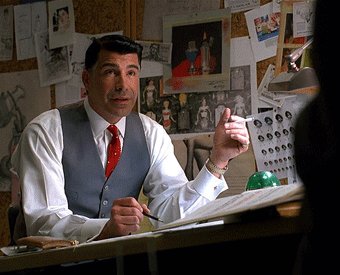A Short History Lesson
From 1890s – 1960s, in what is nostalgically known as the “Golden Age of Illustration,” it was a no-brainer to have at least one full time illustrator on your design team. This changed in the 1960s, when the technology finally arrived that made it affordable to reproduce photography. People were tired of illustrations, and photography would dominate for the next 50 years, as illustrators were pushed out of the design ecosystem.
Now, in today’s social media world, illustration is more popular than ever! Yet illustrators largely haven’t returned to design teams.
There are different factors at play. Design has been computer-based for a long time, but only recently have apps become robust enough for illustration to go fully digital as well. Also, many illustrators feel closer to the traditions of painting and fine art than graphic design.
But I think the biggest factor is illustration has simply been separated from design for too long. Many designers don’t know much about illustration anymore, what it’s for, and how it works. Even illustrators themselves may not know what they can bring to a full-time environment.
What Illustrators Can Offer
I didn’t know what I had to offer until I started working at theSkimm. They put out a daily newsletter that frequently opened with a custom illustration, and I was hired to create those.
But once I joined the team, there were SO many other illustration-related tasks where I was able to offer my expertise:
- A custom icon set
- Brand spot illustrations
- Mockups for sales pitches
- Social media graphics
- Animated stickers
- Guidelines for hiring freelance illustrators
- Scouting illustrators
- Art directing
- A system for designers to create their own illustrated assets
- A rebranded illustration style, complete with brand book guidelines
And what a joy to collaborate with other designers, when illustration is usually such a solitary path!
Illustrators are also frequently:
- logo designers
- character designers
- custom letterers
- pattern designers
- storyboarders.
We tend to be curious, self-motivated people, and may have adjacent skills such as:
- animation
- 3d modeling
- packaging design
- printmaking
- fashion design
- web design
If you don’t have an illustrator on staff, designing a few icons often isn’t a big enough job to justify a freelancer. Typically these jobs will go to whichever graphic designer lists illustration as a skill. But having illustration as a skill is different than being an expert in illustration, in the same way that I list animation as a skill, but I wouldn’t exactly call myself an animator, lol.
And that’s the main point that I want to make! Your design team would benefit from a full-time member who *specializes* in illustration, just like your team benefits from a full-time member who specializes in UI.
But we’ve stopped thinking about illustration as its own unique design discipline, and you see the results. So many ugly, generic company mascots. Branding that includes illustrated assets as an afterthought quickly forgotten, because they require a hired illustrator to maintain. I’ve seen too many print ads where illustration is used decoratively, not as a storytelling tool. Not to mention the glut of generic stock illustration.
I’ve met so many designers who didn’t know much about working with an illustrator. Wouldn’t it be nice to have a member on your team who is knowledgeable in illustration rates and usages, what an artist needs to get started, how long it will take, and how to critique their work?
Lack of illustrators in the hiring process might even be a factor in the way rates have plummeted, making us some of the lowest-paid workers in design. I was able to raise our freelance rates at theSkimm, simply because no one knew what the standard rates were until I told them.
What To Look For
So let’s say I’ve convinced you, and you’re ready to hire an illustrator! Luckily, there are so many talented freelancers who would enjoy a stable, full-time job that you’ll have no lack of qualified candidates. Here’s a few things you should know and look for.
An illustrator lives and dies by their portfolio, so that’s mostly what you’ll have to judge them on. You’ll see a range of skills expressed in an illustration portfolio: use of color and texture, composition, storytelling, visual problem solving, conceptual thinking, and more. You’ll also see a sense of their personality and point of view. Illustrators can do a lot more than what’s in their portfolio; a portfolio is what they like to do best! Ask questions to learn what other styles they feel comfortable working in, and what other skills they bring to the table.
A proficiency in vector illustration is, in my opinion, pretty necessary for any illustrator on a design team these days. So is a basic proficiency in graphics programs. (Though keep in mind, the price of Adobe can be prohibitive, especially to younger artists)
If you’re a design team at a company, you might seek out an artist with a style that matches your brand voice. If you’re a generalist studio, you might seek out an artist who enjoys working in a variety of styles. Find the illustrator who matches what your team already does.
Hire illustrators from diverse backgrounds. You definitely want an artist who understands representation and diversity, since human depiction is such a large part of what we do.
Ultimately, an illustrator is like any specialized designer. You don’t have to be an expert to bring one onto your team, because they’ll bring the expertise with them. And once they’re on staff, you’ll be amazed how much illustration can integrate into your design practice, and how much value it can add.

